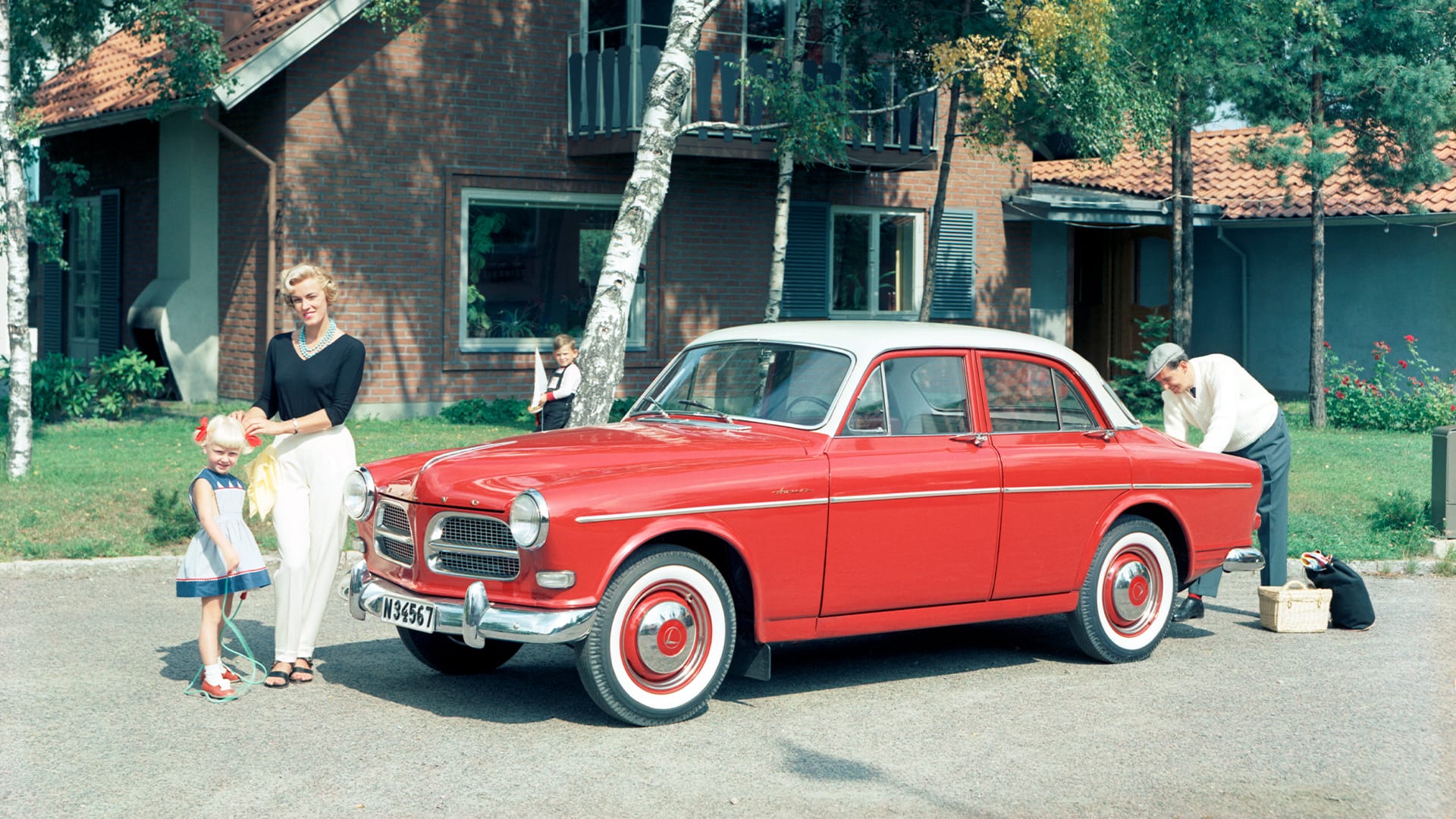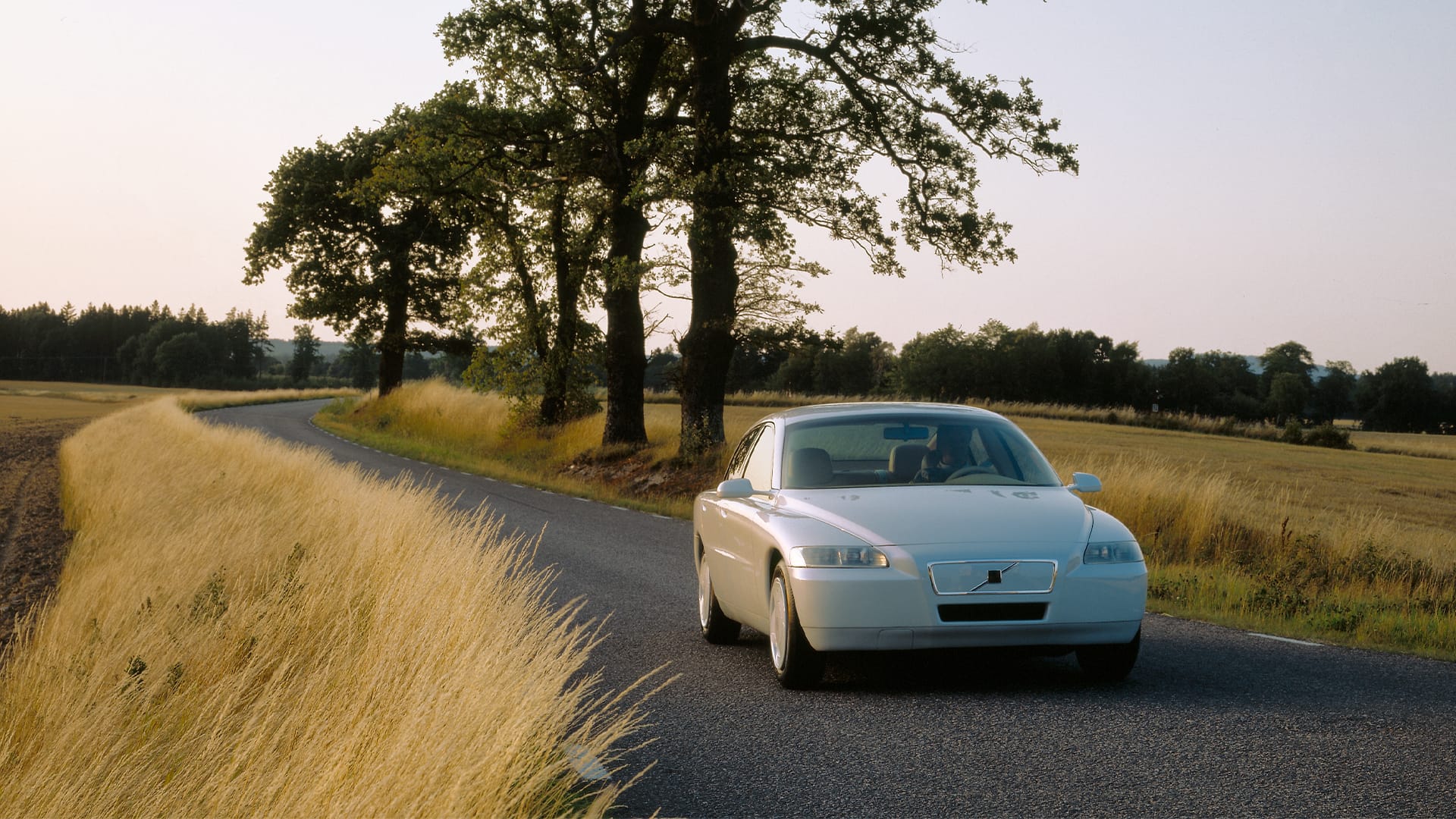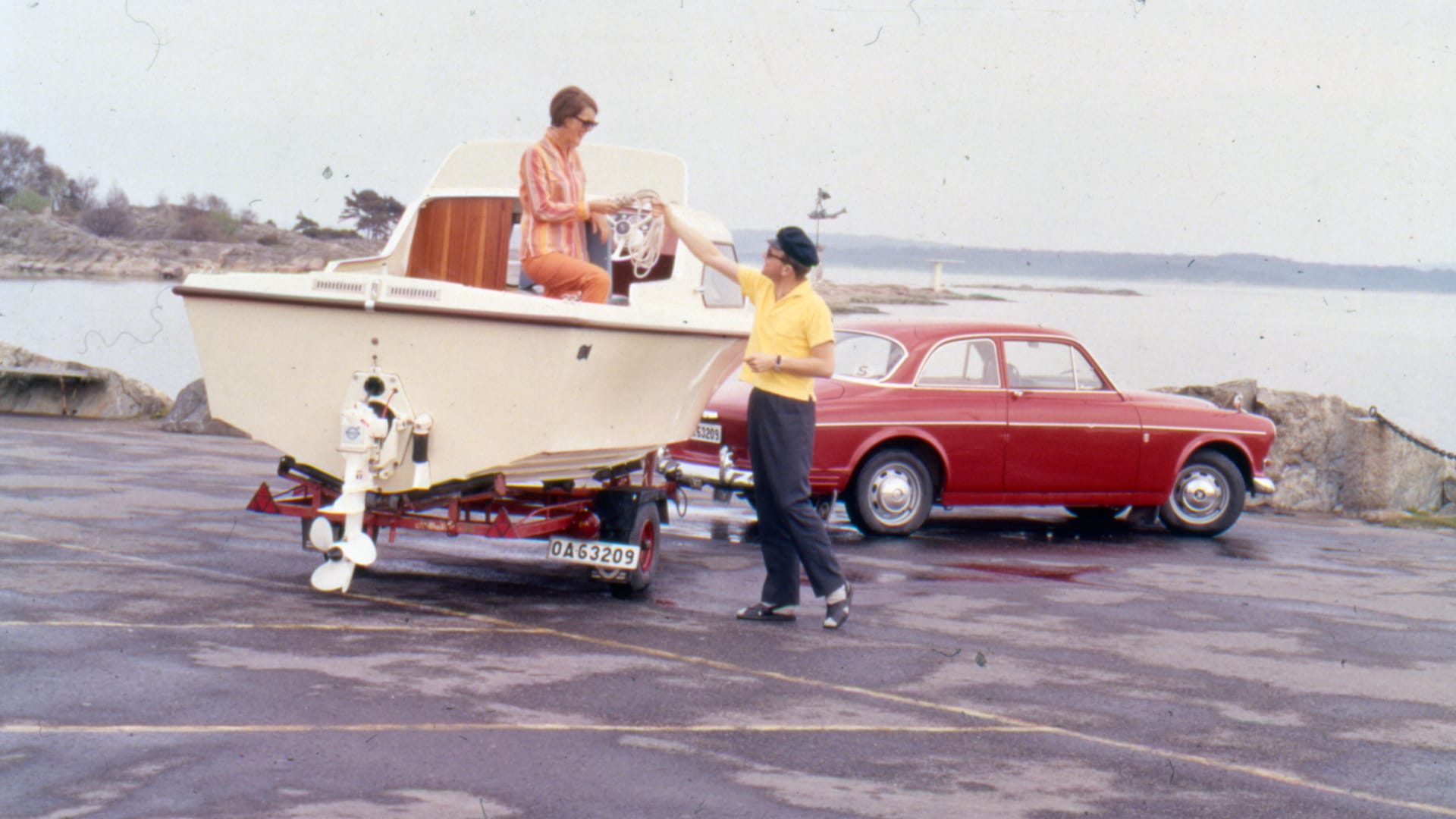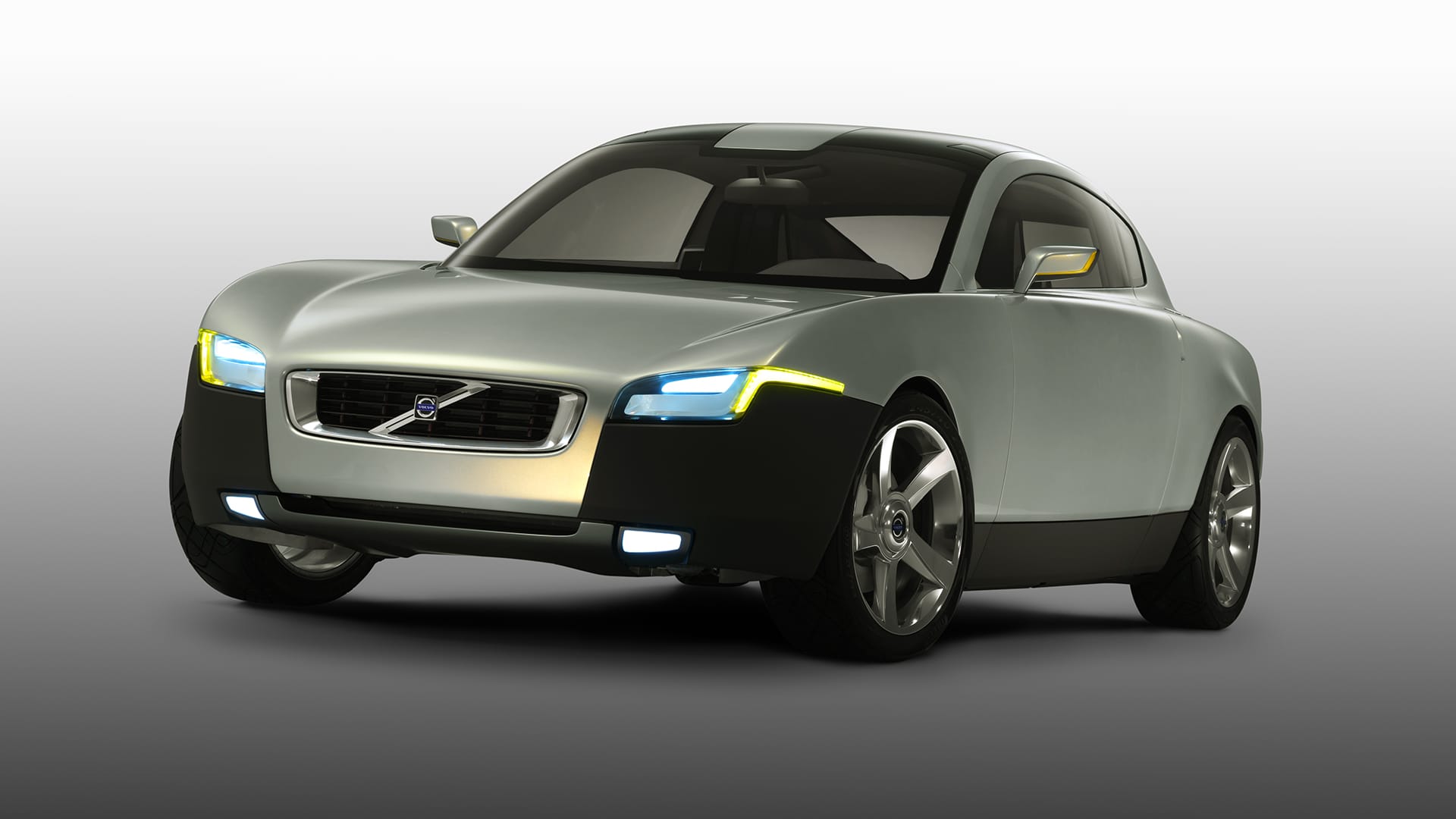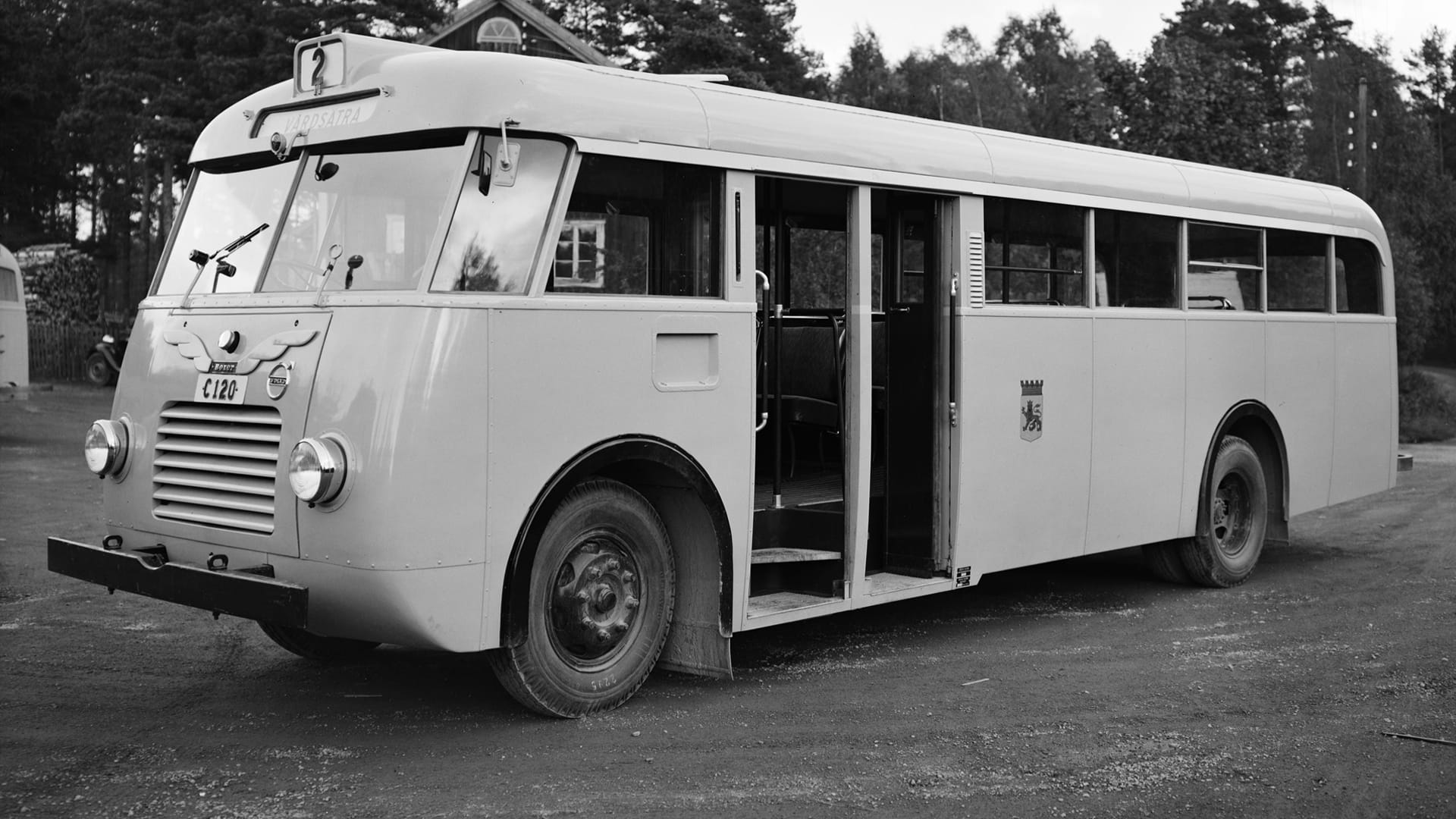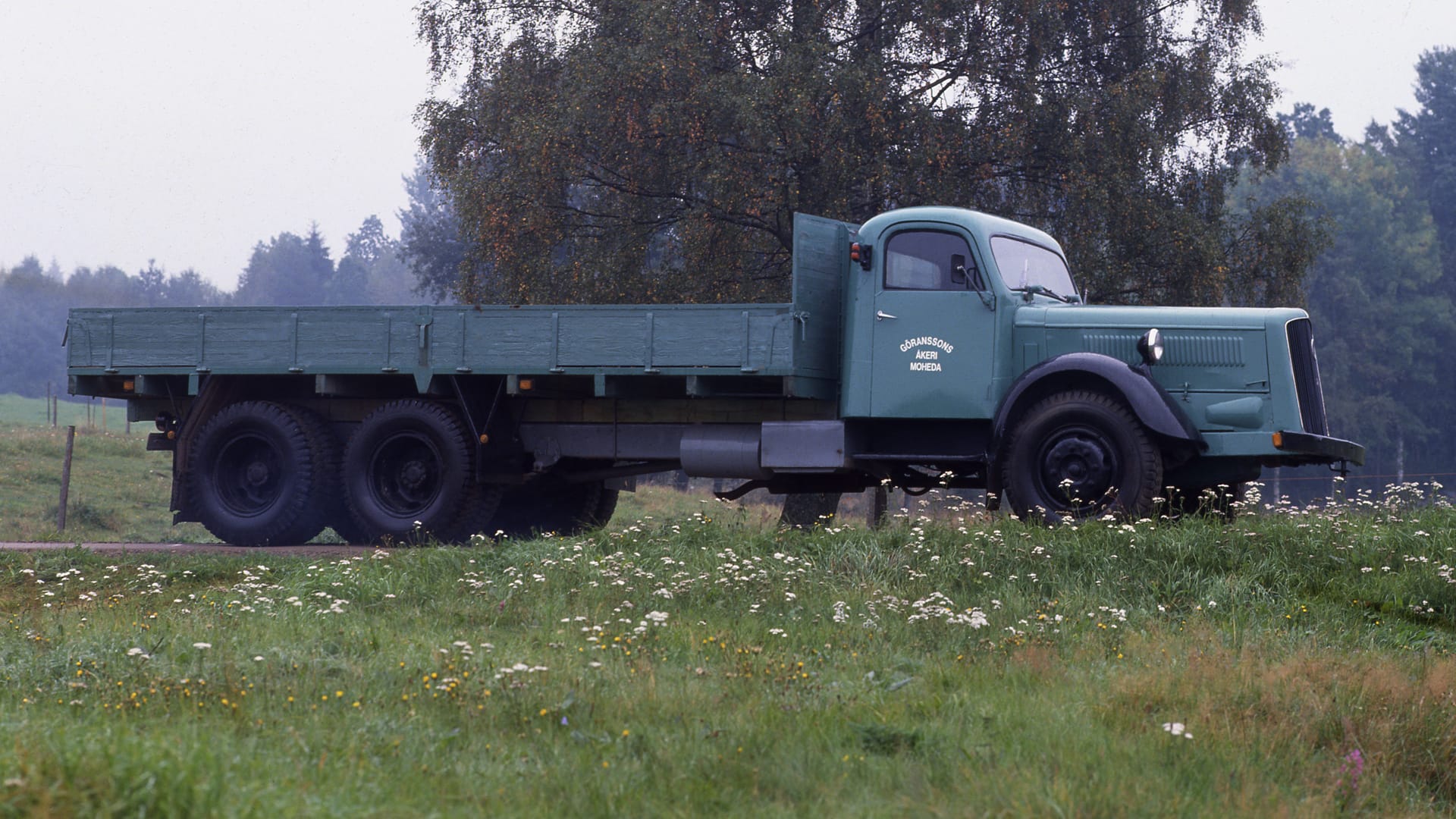Volvo L248 Rundnos

Meet the Rundnos!
The truck models called Rundnos mark the first major sales success. Behind the name lies a range of different variants manufactured over 15 years, from 1939 to 1954. The design, inspired by American, British, and German models, significantly differs from Volvo's car designs for the first time.
Initially, sales are hampered by World War II, during which Volvo's civilian customers are replaced by the military. After the war, new versions of Rundnos emerge, each with different performance and varied applications. The model showcased at the World of Volvo, the L248 from 1950, with its 100-horsepower diesel engine, is suitable for timber transport.
In the first half of the 1950s, 40 percent of all timber in Sweden is rafted – 15 years later, the figure drops to 15 percent. Trucks take over timber transport. Several factors influence this shift. Regulations regarding axle and bogie pressures limit timber loading, but road networks are expanding, and bridges become more resilient.
First diesel engine
Additionally, trucks with more powerful engines and three axles capable of towing heavier trailers are introduced. Truck transport is efficient, enabling direct delivery of timber and goods to industries. LV248 arrives at just the right time. It features Volvo's first diesel engine, the Volvo Diesel type A (VDA), launched in 1946 in the Rundnos LV150. However, only six vehicles are built in the first year.
Bestseller
The engine is a pre-chamber diesel, six-cylinder, with a 6.1-liter displacement and 95 horsepower. But it is modified and strengthened after just a year, with the newer version producing 100 horsepower. This version of Rundnos belongs to the LV245 series, while the model designations are usually L248 or L249, plus an additional letter. Manufactured from 1949 to 1953, the series is renowned for its durability and fuel efficiency. It becomes Sweden's best-selling truck for a period, with a total of 8,200 units sold.
Distinctive style
The first version of Rundnos, the LV125, is launched shortly before World War II and eventually sells very well, totaling around 10,000 trucks. This is an impressive figure considering that railways are still the primary means of freight transport. Over its lifecycle, more than 40,000 Rundnos trucks are sold, many of which are exported – another remarkable feat for the time. The distinctive design immediately identifies it as a Volvo truck. Moreover, there is ample time to become familiar with the Rundnos's appearance. Over 15 years, no mechanical changes are made to the model, which is technically based on its predecessor, the LV93 from 1935.
Many variants
Rundnos evolves in other ways over its 15-year span, with a range of different versions and new engines featuring varying power outputs and cylinder displacements. The base engine in the first model, LV125, features a 4.4-liter overhead valve gasoline engine with 90 horsepower. The truck can also be equipped with a Hesselman engine. Another later version, the LV140, has a 5.65-liter overhead valve gasoline engine with 105 horsepower and becomes popular with the Swedish military, along with all-wheel drive.
Fortunate mishap
The vehicle showcased at the World of Volvo participates in the London to Brighton Commercial Vehicle Run in 1988, a rally for utility vehicles at least 20 years old, held on the first Sunday of May each year. Volvo's history expert, Jean Christer Olsson, and Norwegian journalist Jörgen Seeman-Berg are the drivers and encounter a mishap during the journey: a fuel distributor pipe breaks. Initially seen as an impossible challenge to find a replacement for a diesel engine from 1950, Volvo Action Service resolves the issue, a mechanic fits the pipe, and 13 hours after starting, LV248 rolls into Brighton – and now it stands with us in Gothenburg.







